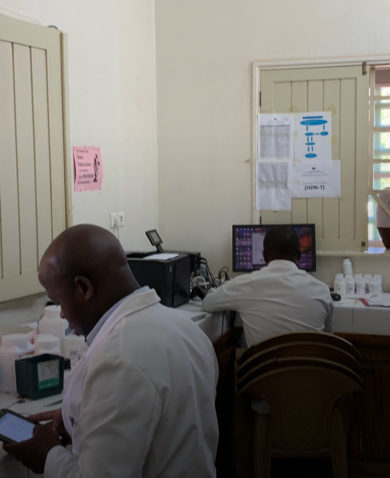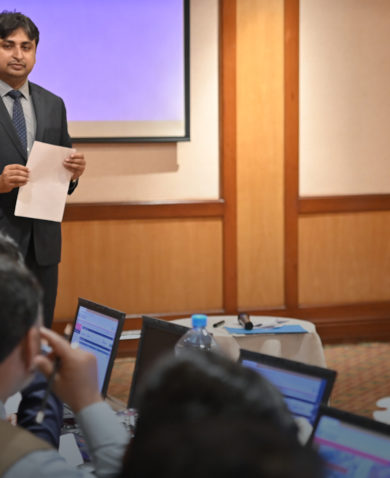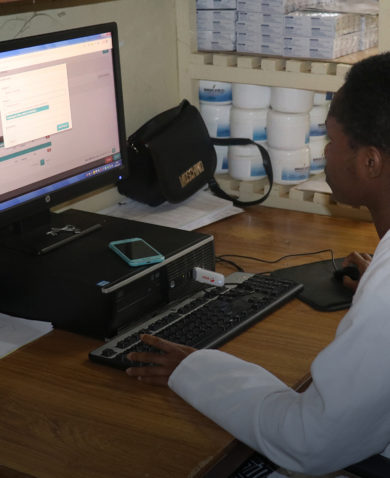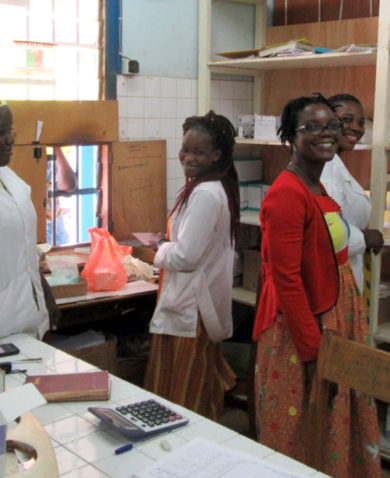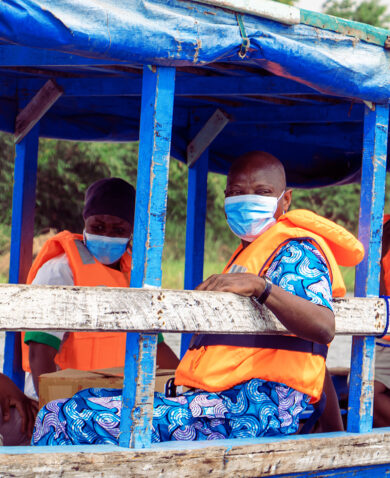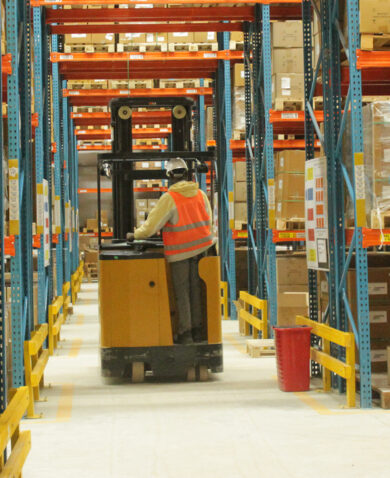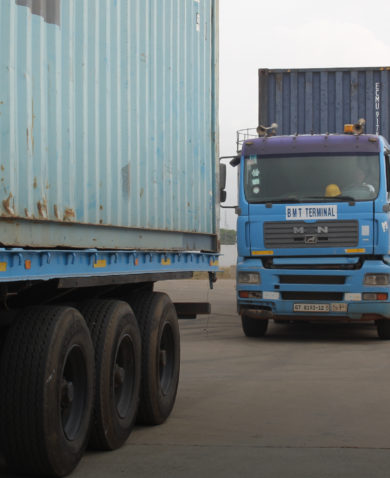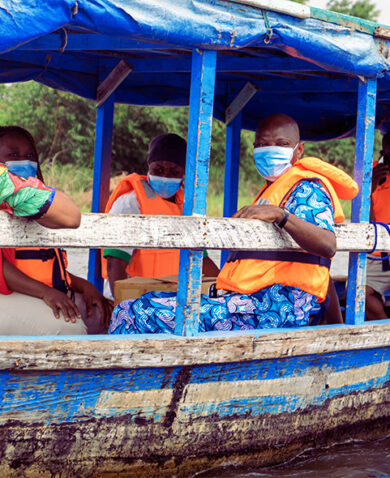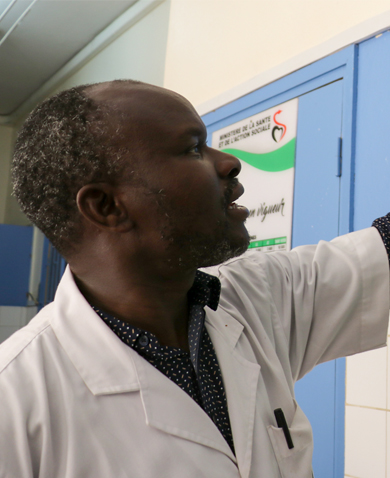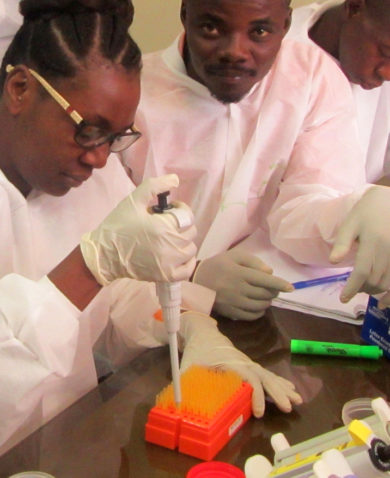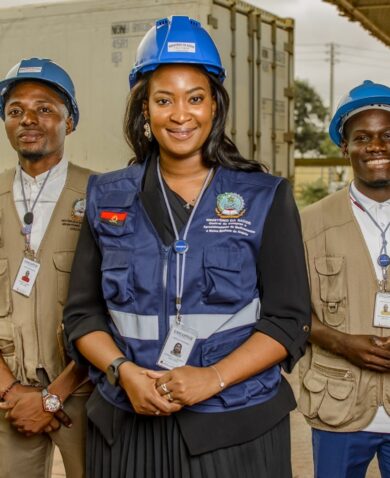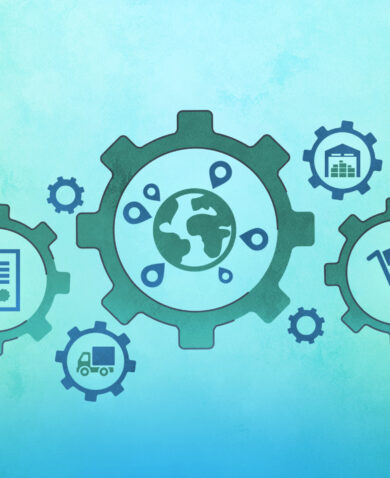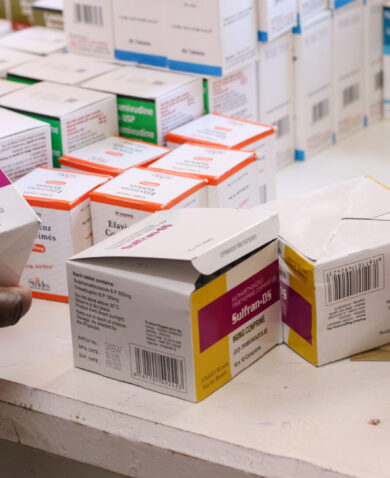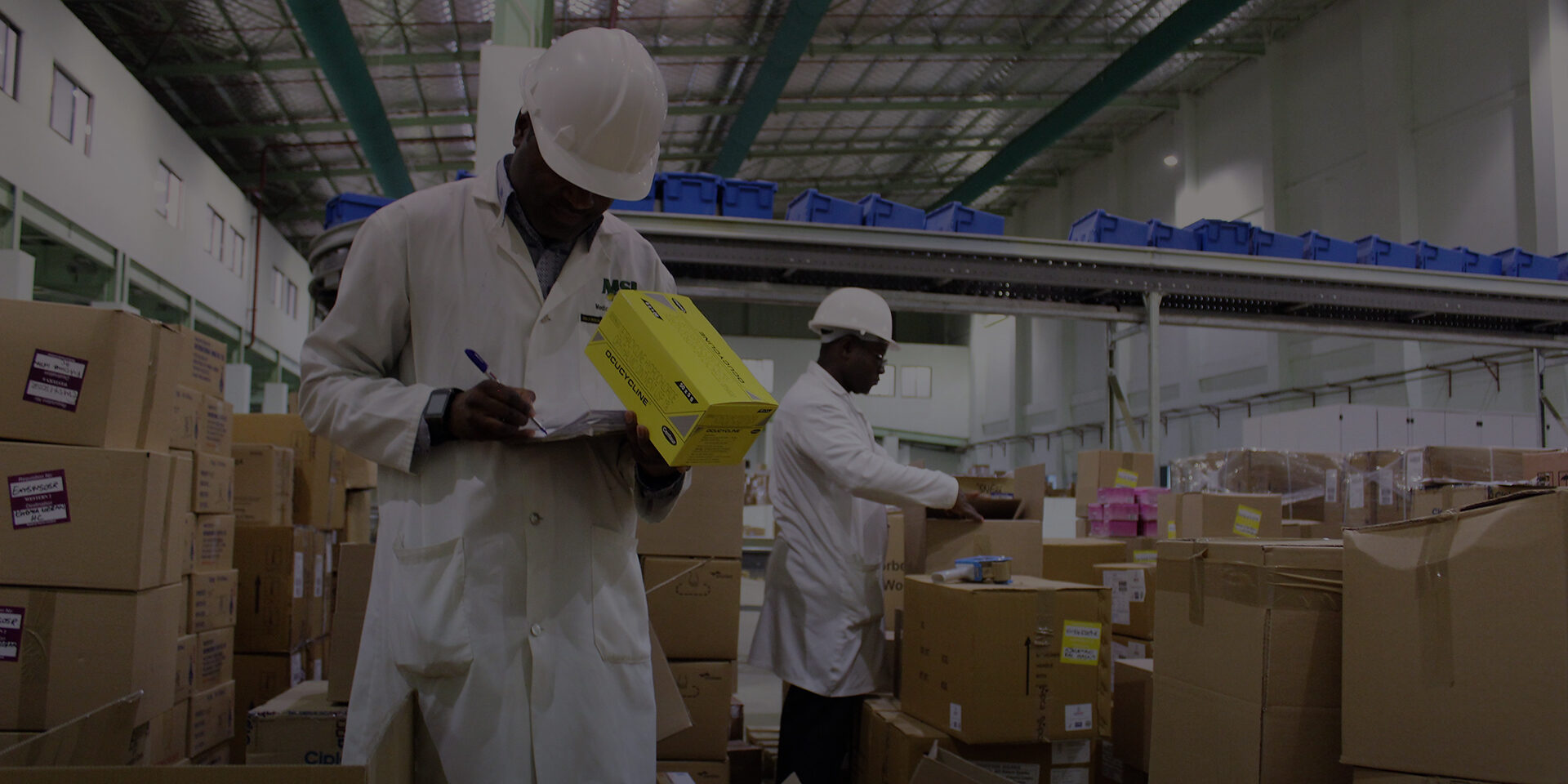
3 Questions with Simon Cole: Re-envisioning Health Commodity Distribution in Zambia
October 27, 2020 | 4 Minute ReadSimon Cole, distribution center logistics director with the USAID Global Health Supply Chain Program’s Procurement and Supply Management (GHSC-PSM) project in Zambia, explains how engagement of third-party logistics providers allowed for quick adaptation to an altered health supply chain and continued delivery of life-saving commodities even in the midst of a global pandemic.
Since 2016, the USAID GHSC-PSM project in Zambia has been working closely with the Ministry of Health, Medical Stores Limited, and other partners to improve availability and access to lifesaving health commodities through procurement, distribution, and supply chain technical assistance. GHSC-PSM and Medical Stores Limited (MSL)’s implementation of an innovative health commodity distribution system through a third-party logistics (3PL) service model has proved beneficial, especially as the global COVID-19 pandemic has disrupted supply chain operations this year. Simon Cole, distribution center logistics director with the USAID Global Health Supply Chain Program’s Procurement and Supply Management (GHSC-PSM) project in Zambia, explains.
1. How has Zambia’s health supply chain changed in the last few years and why?
In the past few years, we’ve seen an increase in patients. Right now, in Zambia, we have more than a million HIV patients on treatment [antiretroviral therapy], and there’s a need now more than ever to ramp up the supply chain. One of the challenges that MSL has had in recent years is trying to keep up with the demand for the distribution and this has been a struggle on many fronts. Sometimes it’s because they don’t have enough vehicles, or the vehicles are not on the road, or they don’t have enough money for fuel. So, this is where the project itself, PSM, is being able to support through the 3PL model.
2. What have been the benefits and/or challenges of working closely with Zambia’s Medical Stores Limited?
Well, the benefits have been that they are very keen to learn. There’s been a massive amount of investment in infrastructure at MSL. They’ve got a brand-new warehouse that has gone from 8,000 pallet spaces to 32,000 palette spaces and the team there, especially the senior management team, are interested in understanding how they can improve the processes in their warehouse. As a project, we have been supporting their systems and helping with infrastructure and we’re also helping to develop and update the distribution hubs in the provinces.
But the challenges are also there with regards to data flow, trying to work out how many trucks are needed on a regular basis for distribution routes, and trying to support them through day-to-day planning. So, we have been working closely with the 3PL organization and used this as a learning opportunity as we have a tripartite agreement with the third-party logistics provider where MSL, PSM, and the provider each have specific roles. MSL are being instructed on how to manage a third-party logistics provider, so that we build that human capacity. Then, as we move away from supporting MSL, they’ll be able to stand on their own feet.
MSL is also realizing the benefits of the 3PL. They can see that the 3PL is saving money, even though MSL is not paying for this at the minute, but when they do, they can see that they’re not having to pay for maintenance for trucks, they’re not having to pay the salaries for drivers, they’re not having to hope that they’ve got enough money to pay for fuel. Instead, that’s all the challenge or the headache for the 3PL provider because they are under an agreement to have trucks available within 24 hours.
All in all, it’s a learning curve. But MSL are seeing that this is the future with regards to themselves outsourcing the trucks and then the distribution. I think it’s been very positive. It’s also helped a lot from a senior management perspective for them to be willing to learn and understand new techniques.
3. As we all know, COVID-19 has impacted health supply chains around the world. How has Zambia’s third-party logistics service model worked during the pandemic? And what other adjustments have been made to supply chain operations in-country?
If you were to look at the dynamics right now in Zambia, we’ve got more than about 15,000 positive cases, only about 400 active cases, and have had around 300 deaths. So, we haven’t had the same level of impact as other countries. However, we didn’t know how things would evolve back in March. One of the things that we’ve understood from the COVID-19 pandemic is that people that have immune problems or existing conditions, especially HIV patients, need to be protected. And so, it was very important that in March and April and May that we used the 3PL organization to push out bulk medicines so that people could have six months’ worth of medicines. This way, they wouldn’t need to keep going back to the clinics and add to that viral load that was there or risk their own health while virally suppressed and at risk. Using the 3PL organizations meant that we could get trucks out quickly. We weren’t worried about a truck not having a battery or not having a driver, we could continue with our deliveries. Currently, the 3PL vendor is supplying 80 percent of the distribution needs for the MSL and this is important and we’re right in the middle of a second distribution. Even though COVID-19 hasn’t hit Zambia as hard as other countries, we are now sending out medicines again to top up the six months multi-month dispensing so that patients do not have to risk getting exposed to the COVID-19 virus by visiting a clinic.
One of the challenges we also had was from an international perspective. This wasn’t with the 3PL per se, but it was with suppliers that are bringing in medicines into Zambia. Zambia’s a landlocked country, so we don’t have the luxury of ports and so it’s truckers that were crossing the borders from high-risk areas such as South Africa where there are over half a million positive cases. It’s been important to look at the protocols and to ensure that, first of all, the truckers are safe, but also that they’re not contaminating the staff at MSL. The project supported MSL with personal protective equipment (PPE), so when they’re unloading trucks from international suppliers, it reduces the viral load. We also make sure the truckers don’t get out of the trucks. All this has meant that we’ve had to be agile with regards to talking to international truckers.
We also needed to make sure there are 3PLs in the country available to supply trucks to get medications out to clinics and patients. What we developed is a faster approval system for trucks. Before there was a lot of manual signatures and what we’ve done now is we’ve used automatic and electronic signatures to improve the velocity of approval. So, all of these things are trying to get the drugs onto the road as quickly as possible to the patients and reducing the access to the virus.
*Banner image caption: A worker at a Zambia warehouse.
Posts on the blog represent the views of the authors and do not necessarily represent the views of Chemonics.

